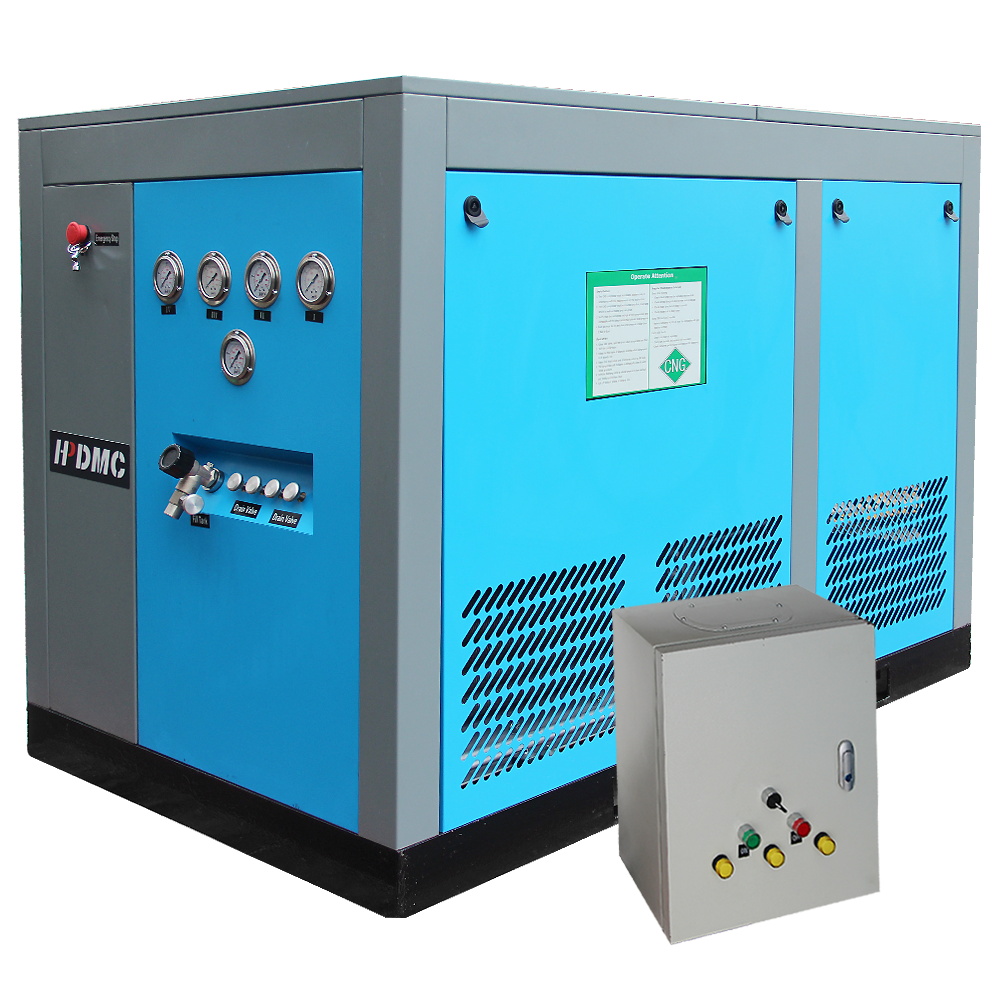
Blowers: Essential Devices for Air and Gas Movement
Blowers are crucial mechanical devices used across various industries and applications to move air or gas. They are designed to increase both the velocity and volume of airflow, providing the necessary force for different processes. Understanding their diverse applications and key considerations when selecting a blower is essential for optimizing operations in numerous fields.
Working Principle and Applications
Working Principle
Blowers operate based on different mechanical principles, with the most common being positive displacement and centrifugal designs.
● Positive displacement blowers work by trapping a fixed volume of air or gas in a chamber and then forcing it out through the outlet.
● Centrifugal blowers use a rotating impeller to accelerate air or gas outward, converting rotational energy into kinetic energy, which increases both pressure and flow rate.
For example, HPDMC blowers may incorporate advanced engineering to ensure efficient and reliable operation.
Applications
Industrial Ventilation
Proper ventilation is essential for maintaining a safe and healthy work environment. Blowers supply fresh air and remove stale air, fumes, and contaminants. They are commonly used in factories, workshops, and mines to improve air quality and prevent the buildup of harmful substances.
For instance:
● In chemical manufacturing plants, blowers help expel toxic gases to meet safety standards.
● In foundries, they assist in removing dust and heat generated during the casting process.
Wastewater Treatment
Blowers play a critical role in wastewater treatment plants by aerating wastewater, promoting the growth of beneficial microorganisms that break down organic matter.
● By injecting air into treatment tanks, blowers enhance oxygen transfer, aiding in pollutant decomposition before discharge.
● They also help agitate sludge in settling tanks, preventing stagnation and improving the separation of solids and liquids.
Pneumatic Conveying
Many industries rely on pneumatic conveying systems to transport bulk materials like grains, powders, and pellets.
● Blowers generate a high-velocity air or gas stream that suspends and moves these materials through pipes.
● This method is widely used in food processing, pharmaceuticals, and plastics industries due to its efficiency and cleanliness.
● Example: In a flour mill, blowers transport milled flour from grinding machines to storage silos.
HVAC Systems
Heating, Ventilation, and Air Conditioning (HVAC) systems depend on blowers to circulate conditioned air throughout buildings.
● Blowers distribute heated or cooled air from HVAC equipment to various spaces, maintaining comfortable indoor conditions.
● Large-capacity blowers are used in commercial buildings like offices and malls, while residential HVAC systems rely on them in furnaces and air conditioners.
Aeration in Aquaculture
In fish farms and aquaculture facilities, maintaining proper oxygen levels in water is essential for fish health.
● Blowers aerate the water by diffusing air bubbles, promoting gas exchange and improving water quality.
● Continuous operation ensures a stable oxygen supply, preventing fish suffocation and reducing harmful substances like ammonia.
Key Considerations for Selecting a Blower
Airflow and Pressure Requirements
Selecting the right blower depends on its required airflow rate (measured in CFM – Cubic Feet per Minute) and pressure (measured in PSI – Pounds per Square Inch).
● Industrial ventilation may require a high airflow rate to circulate air efficiently.
● Pneumatic conveying needs both sufficient airflow and pressure to transport materials without clogging.
● Accurately assessing an application’s needs ensures optimal blower performance.
Energy Efficiency
Energy consumption impacts operating costs. Opt for blowers with:
● Energy-efficient motors and advanced impeller designs to reduce waste.
● Variable speed drives, which adjust output based on demand.
● Higher efficiency not only cuts costs but also supports environmental sustainability.
Noise Level
In noise-sensitive environments, blower noise can be disruptive. Consider:
● Models with noise reduction features, such as soundproof enclosures or quieter motor designs.
● Proper installation and maintenance to further minimize noise.
Durability and Maintenance
Durability is vital for industrial and continuous operation applications. Look for:
● High-quality materials, such as corrosion-resistant coatings and robust bearings.
● Easy maintenance access for cleaning, lubrication, and part replacement.
● Simple maintenance procedures improve service efficiency and reduce costs.
System Compatibility
A blower must be compatible with the existing system. Key factors include:
● Size and connection types that integrate seamlessly with ducts, filters, and other components.
● Output pressure and airflow matching system requirements to prevent inefficiency or failure.
HPDMC CNG Compressor for NGV Filling
The HPDMC CNG Compressor for NGV Filling is a specialized unit designed for natural gas compression and transfer, particularly for filling vehicles.
Key Features:
● Capacity: 10 GGE (Gasoline Gallon Equivalent)
● Pressure: 3600 PSI
● Power: 5.5 HP
● Voltage: Custom-made
Safety and Functionality:
● Anti-explosive design ensures safe handling of natural gas.
● Simple installation and operation, with a separate electric controller for ease of use.
● Ideal for filling 2–4 vehicles, with different models (DMC20 and DMC50) offering varying flow rates and filling times.
Performance Example:
● DMC20 model has a flow rate of 20 Nm³/h (12 CFM W)
● Can fill a 60L CNG tank in:
○ 36 minutes at 200 bar (3000 PSI)
○ 45 minutes at 250 bar (3600 PSI)
The compressor also includes:
● Pressure gauge for gas pressure monitoring.
● Discharge valve for connecting the filling hose.
● Drain valve for moisture and oil removal after filling.

